- Home
- T. J. English
The Corporation
The Corporation Read online
About The Corporation
A gripping tale of gangsters, drugs, violence, sex and murder.
By the mid-1980’s, the American underworld was a vicious melting pot of powerful criminal tribes. The most feared was the Cuban mob. This organisation of exiles, ruthlessly led by a kingpin named "Battle", was so cold-blooded it was known on both sides of the law as “the Corporation”.
Drawing on first-hand accounts and deep research, and with the blistering prose that established him as ‘America’s top chronicler of organised crime’, T.J. English’s The Corporation reveals how a generation of Cuban refugees, racketeers, corrupt cops, hitmen, and their families got caught up in a very American saga of empire building, criminal enterprise and revolution.
Contents
Cover
About The Corporation
Dedication
Epigraph
Introduction
Prologue
PART I: Traición/Betrayal
1 Brigade 2506
2 Birds of a Feather
3 Santo
4 The Rain in Spain
5 Bring Me the Head of Palulu
6 The Prodigal Son
7 Rasputin in Mexico
PART II: Venganza/Revenge
8 Counterrevolution
9 The Counselor
10 Corruption
11 Smoke and Fire
12 A Prayer for Idalia
13 Cockfighter
14 Dead But Not Dead
PART III: “Lo Hecho, HechoEstá” / “What Is Done, Is Done”
15 Old Friends
16 Stormy Weather
17 Beginner’s Luck
18 Down and Out in Lima
19 President in Exile
20 Perseverance
21 CómoFue/How It Was
Epilogue
Acknowledgments
Appendix: The Racketeering Enterprise
Notes
Sources
Index
Images
About T.J. English
Also by T.J. English
Copyright page
In memory of those who lost their lives April 17–19, 1961, at the Bay of Pigs, Matanzas, Cuba
Aquellos que van a retozar con los gatos deben esperar a ser rayado. Those who’ll cavort with cats must expect to be scratched.
—MIGUEL DE CERVANTES
Don Quixote
INTRODUCTION
IN THE UNITED STATES OF AMERICA, THE TRUE MELTING POT HAS BEEN ORGANIZED crime. The process of becoming American is rooted in gangsterism. If you start with the supposition that the country is by its very nature a criminal enterprise—colonized and taken by force from the indigenous population, then facilitated by an economic system of human enslavement that was eventually determined to be illegal—you get the picture. The seed was planted long ago. The Mob is merely the flowering of that seed, watered with the blood of the many thousands of gangland slaying victims from over the last century.
Traditional organized crime—Irish, Italian, Jewish, and more—has its roots in the early decades of the twentieth century. The Prohibition era gave rise to a criminal system by which gangsterism and politics would be inexorably linked, and the American underworld was institutionalized. Aspects of this history have been memorialized in movies, novels, and popular culture. For many citizens, the very idea of gangsterism is rooted in this historical narrative of getting ahead in the social universe, what we sometimes refer to as the pursuit of the American dream.
For Cuban Americans, this storyline is of a more recent vintage. Whereas the traditional Mob arose in the early decades of the previous century, the Cuban underworld in the United States was spawned by a revolution back home in La Patria, the Homeland, which took place in the 1950s.
The tumultuous legacy of the Cuban Revolution, as led by Fidel Castro, Ernesto “Che” Guevara, and many others, has been chronicled in innumerable books, documentaries, paintings, plays, movies, and personal histories. Like other historical events of great consequence, it has been interpreted and reconstituted through the prism of political ideology, iconography, legend, and fantasy so that the lessons to be learned are fungible, depending on your point of view. Castro is a hero; Castro is the devil. The revolution was for the people, or it was done to centralize the power of the government, so that Castro could never be challenged.
One indisputable and rarely discussed point is that many men and women who contributed to the revolution, including some who fought alongside Castro and his 26th of July Movement, did not know—nor would it have been their intention had they known—that they were taking part in a communist takeover. Castro was scrupulous in not declaring the political movement of which he was a part to be a Marxist-Leninist enterprise. When he traveled to the United States in 1955–56 and gave speeches designed to raise money for his cause, he kept his cards close to his chest. It was only after the revolution was successful that Castro and Guevara made their designs clear.
Some prominent members of the revolution, including rebel fighters who had distinguished themselves on the battlefield, and also some leading minds of the underground resistance, expressed their dismay with the direction of the new revolutionary government. When it became clear that the Castro regime was to be a communist dictatorship, with no legitimate elections, people began to flee. Supporters of the deposed dictator, El Presidente Fulgencio Batista, were, for obvious reasons, among the first to abandon ship. Those who didn’t escape were rounded up; some were put up against a wall and executed by firing squad. (¡Paredón!—To the wall!) The next to flee were the upper classes, which had seen their property and businesses seized by government decree. And then came the tens of thousands of others, common folk—teachers, professionals, artists, and the dispossessed— who fled the island any way they could, by plane and by boat, and, in later years, by raft, inflated inner tubes, and other flimsy, jerry-rigged vessels, some of which succumbed to the stormy realities of an unforgiving sea, resulting in death.
For those who fled, especially those who had originally been supportive of the revolution, the dominant mood was one of resentment along with a deep sense of betrayal. Where there are feelings of betrayal, there is often a need for revenge. This was a concept that flowed like ectoplasm through the veins of a newly vanquished people
They settled mostly in South Florida, primarily the city of Miami, which was 228 miles across the Florida Strait from Havana, a short forty-five-minute flight for those with the means and rarefied diplomatic status to make the journey. A number of Cubans continued north and settled in Hudson County, New Jersey, mostly in the town of Union City, which by the late 1960s would have the largest population of Cuban émigrés outside of Miami. There, they found work in the garment factories that had served as the area’s main source of employment since the post–World War II years, when the town was populated mostly by citizens of Italian, Irish, and Jewish extraction.
Both in New Jersey and in South Florida—in fact, anywhere that Cubans settled—they brought their cultural traditions. Brilliant Afro-Cuban music; vibrant dance clubs; a devotion to Catholicism and also, in some cases, the pagan religion of Santería; cigars nonpareil; occasional cockfighting; the preeminence of family life; a diet heavy on chicken, léchon (suckling pig), plantains, and rice and beans; a taste for rum from the islands; and, for some, an affinity for games of chance, most notably a simple game known to all Latinos as la bolita.
Literally, the word bolita means “little ball.” The designation stems from a time when the national lottery in Cuba was determined by small numbered balls being thrown into a bag, mixed up, and then randomly withdrawn to determine the daily number. Bolita, the illegal underground numbers game, was known as the poor man’s lottery. The winning number wa
s based on the Cuban national lottery; it was cheaper, so you could play for less and win more money. From the 1920s onward, it became something of a national passion in Cuba, as common as sugarcane fields, royal palms, and the distant, ever-present drumbeat of revolution.
Given the ubiquitous presence of bolita among Cubans of all classes and genders, it was perhaps inevitable that the game would thrive in the Cuban exile communities of Miami and Union City. And so it was. The man whose name would come to be associated with this illegal activity in the United States had not been a seasoned bolitero, or bolita boss, back in Cuba. He had been a cop in the city of Havana during the reign of the Batista dictatorship. His name was José Miguel Battle y Vargas.1
HAVANA IN THE 1950S WAS A ROLLICKING CITY OF CORRUPTION AND GOOD TIMES. Some would remember it as one of the most glorious localities for sensuality and vice in the entire twentieth century. Partly this had to do with the Caribbean’s historical precedent as a crossroads for black market commerce and profiteering since the days of spice traders, international mercenaries, pirates, and buccaneers. Havana would eventually become a city unlike any other in the region—a sophisticated Latin American center of culture and grand architecture—but the city would forever maintain its sultry, sexually oriented underbelly as a draw for tourists and celebrities from around the globe.
Meyer Lansky, Charles “Lucky” Luciano, and Santo Trafficante Jr. were among the prominent mafiosi in the United States who had always recognized Cuba as the ideal location for an offshore base of operations. It also had great value as a moneymaking proposition by itself. Lansky was the first to establish a relationship with Fulgencio Batista, who in 1952 appointed the mobster as Cuba’s director of gambling reform. Lansky cleaned up the island’s bad reputation for rigged casino gambling. This would lead to an expansion in the gaming and entertainment industry in Cuba unlike anything seen before.
It all started with the casinos, which were mostly located inside the best hotels in town. The Hotel Nacional had the most elegant casino, and the swankiest was inside Lansky’s own Hotel Riviera, which opened in 1957. Designed by internationally renowned architect Igor Boris Polevitzky, the room was oval, with luxurious wall-to-wall carpeting, gold leaf walls, and velvet banquettes, and from the ceiling hung seven custom-designed gold and crystal chandeliers. In the room’s center were the gaming tables—roulette, craps, blackjack, chemin de fer (baccarat), with a row of slot machines lining the curved perimeter wall. The sunken Doble o Nada (Double or Nothing) bar off the casino floor was one of the hotel’s three venues for live entertainment.
From the outside, the casino’s egg-shaped roof, adjacent to the hotel itself, was modernistic. The entire place was a work of art.
The casinos in Havana set the tone and generated a flow of cash that spilled into other areas. Every hotel had a nightclub that became the center of a fabulous entertainment scene, with hot Latin jazz orchestras, luscious showgirls, elaborate floor shows, and many top singers and entertainers from the United States. Outside these official worlds of casino gambling and live entertainment was a vibrant netherworld of bordellos, sex shows, private high-stakes card games, and access to narcotics.
José Miguel Battle worked this terrain from the highest levels to the lowest. He was a vice cop in 1950s Havana, which was something like being a centurion in the age of Caligula. Other branches of the police dealt with political dissent and underground political activity. The notorious Servicio de Inteligencia Militar (SIM), Batista’s secret police, rounded up students and others who were believed to be involved in antigovernment activities and took them to warehouses and back rooms to be tortured and sometimes killed. Battle was not involved in this kind of policing. He was a member of the national police, not military intelligence. As a vice cop, he made the rounds at whorehouses, gambling parlors, nightclubs, cockfighting dens, and the hotels, where you could smoke a cigar in the lobby. He came to know the city’s inhabitants, from the lowliest street pimps to people high up in politics and the entertainment worlds.
One of those people was Martín Fox, the proprietor of the most legendary nightclub in town, the Tropicana. Before he became a nightclub impresario, Fox had been one of the city’s preeminent boliteros. He started as a lowly listero, one who takes bets and records the transactions on paper. By the late 1940s, after moving from his home province of Matanzas, he became one of the wealthiest banqueros, or bolita bankers, in Havana. He was the one who covered for all other boliteros if a particular number that had been bet on by multitudes—say, the number eight on September 8, the date of the Feast of the Virgin of Charity, Cuba’s patron saint—was the number that day. Fox had enough “bank” to cover those losses, with the knowledge that over time his percentage of the winnings from all of the boliteros combined would greatly outstrip the losses. Eventually, he parlayed his winnings into establishing an underground gambling scene in Havana that, though illegal, was made possible through payoffs to the police.
José Miguel Battle came to Havana as a cop in June 1951. By then Martín Fox had risen from bolitero and underground gambling boss to being the owner of the Tropicana. Between Battle and Fox there was a natural affinity. They even looked alike. Both were heavyset men, salt-of-the-earth types, equal parts friendly and gruff. They resembled the movie actor Anthony Quinn. Both were guajiros, country bumpkins who had come to Havana with a dream of making something of themselves in the big city. Though the younger Battle was as dazzled as anyone by the Tropicana, when he met with Fox he was more curious about Fox’s time as a bolitero and how he had used that to achieve high social status.
In time, they formed something of a business relationship. Fox made monthly payments of five thousand pesos to José Salas Cañizares, the chief of police. Sometimes the man who delivered that payment for Fox was José Miguel Battle. Later, Battle’s role as a bagman in Havana would be upgraded considerably, when he began delivering much larger sums of cash from high-ranking U.S. mobsters to the presidential palace of Fulgencio Batista.
THE TOWN OF ALTO SONGO, IN THE PROVINCE OF ORIENTE, IS LOCATED NEAR THE eastern end of the island, far from Havana. In modern Havana, they have a joke about those from Oriente living in the capital city. They are referred to as Palestinos (Palestinians), because in Havana they are a people without land. Alto Songo, the birthplace of José Miguel Battle, was at the time of his birth nearly preindustrial, without modern plumbing and limited access to running water or electricity.
Battle was born at ten o’clock on the morning of September 14, 1929. He was the oldest child of José Maria Batlle Bestard and Angela Vargas Yzaguirre, who had been born and raised in Alto Songo. Eventually, José Miguel was joined by five brothers (Gustavo, Pedro, Sergio, Hiram, and Aldo) and a sister (Dolores). As a youth, he attended the Instituto Santiago de Cuba, the main school in the city of the same name. He graduated in 1947.
Just two years later, at the age of nineteen, Battle joined the Cuban national police in Santiago. A year and a half later he was transferred to Havana, which was a big step up for the young guajiro. Not only would he no longer have to wear the uniform of a cadet or patrol officer, but he was assigned to the vice squad, which meant he came to work in street clothes. Technically, he was a “delegate,” or investigator, with the Bureau of Investigations, a division of the national police based out of a police station in the Rio Almendares area. Battle’s unit dealt primarily with illegal gambling and robberies.
At the same time that José Miguel was inaugurating his career as a policeman in Havana, he began a family. In 1952, he married Maria Josefa Rodriguez y Vega, and within a year they had a son, José Miguel Battle Jr. They lived in the Luyano district, near the Port of Havana.
Most anyone who knew Battle during these years remembered him as someone who moved easily between the police and criminal worlds— when it came to gambling, there was little difference between the two. Gambling bosses paid the police for protection, and the money was spread throughout the chain of command. In Havana, as in many ci
ties with an active underworld, criminals were not necessarily people you put in jail. For a detective, sometimes it was better to have crooks out on the street working for you. Battle always seemed to be looking to make alliances.
One street criminal who got to know Battle in Havana was a man we’ll call “Jesús.”2 A year younger than Battle, Jesús was a black market gun merchant in the city at a time when weapons were in high demand, both with street criminals and with political rebels plotting against the government. Jesús was part of a crew that stole guns, sometimes from the police, and sold them to whoever was interested. Occasionally he served as a middleman receiving stolen guns from others and selling them to a third party. “Sometimes,” he said, “we sold guns back to the same people they were stolen from.”
One day, a friend of Jesús’s came to him and said, “There’s a cop who wants to talk to you. His name is José Miguel Battle.”
Jesús had never heard of the guy. “What’s he want to know?”
“He knows you’ve been bartering stolen guns on the black market, guns that were stolen from the police.” Jesús’s friend knew Battle and vouched for him as someone who was “honorable,” meaning someone who knew the rules of the underworld and would not use the meeting as an opportunity to arrest him.
Jesús agreed to meet the cop. They met in the restaurant at the Hotel Sevilla Biltmore, an establishment owned by Amleto Battisti y Lora, who was a key player in the Havana Mob. Battisti, an Italian national, was, among other things, a cocaine and marijuana peddler who made regular payoffs to the police. If this cop, Battle, was willing to meet him there, Jesús knew he had nothing to worry about.
Battle showed up at the Sevilla Biltmore with Vincente Juvenciente, his partner. Jesús was there with a friend.
Said Battle to Jesús, “Did you recently buy some revolvers from a black guy in El Centro [Havana’s Central district]?”

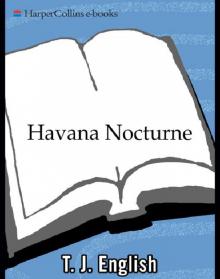 Havana Nocturne
Havana Nocturne Paddy Whacked
Paddy Whacked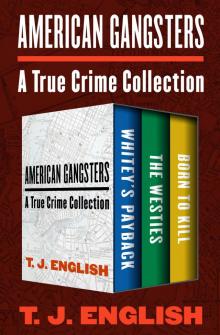 American Gangsters
American Gangsters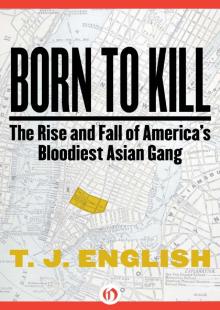 Born to Kill
Born to Kill Westies
Westies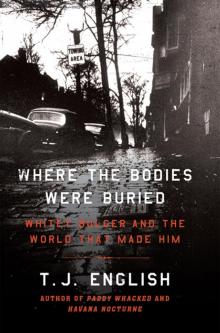 Where the Bodies Were Buried
Where the Bodies Were Buried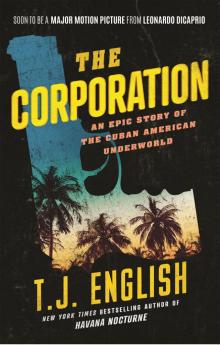 The Corporation
The Corporation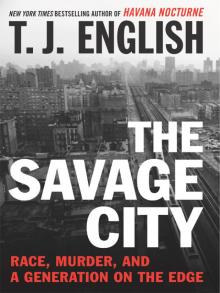 The Savage City
The Savage City